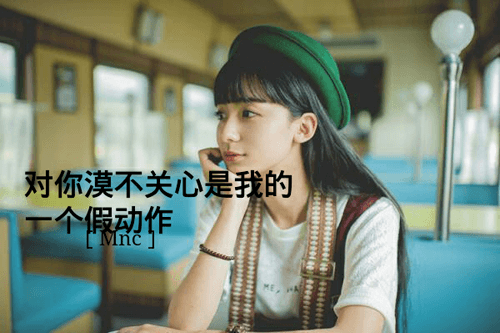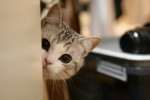
北京的颐和园英语作文【一】
去年暑假,妈妈带我到颐和园游玩。
一进公园大门,首先映入眼帘的是一个碧波荡漾的昆+明湖,一座洁白秀丽的十七孔桥通向湖心。
我兴高采烈地随着三五成群的游客向十七孔桥走去。桥头上有一只只栩栩如生的狮子,这些狮子非常生动,并且544只狮子都神态各异,姿态不同,看上去惟妙惟肖。每个桥墩上都雕有瑰丽的图案,这些图案美观大方,十分和谐,就连桥的里面都雕刻得十分古朴。走上汉白玉石桥,每一块石头都打磨得非常光滑,走上去能感觉到皇家园林的气息。我站在桥头上,欣赏着湖上的美景。一棵棵树木倒映在随风荡漾的水中,蓝天白云也映在了这碧绿色的镜子里,形成了一幅富有诗意的\'画卷。
走下桥头,我沿着昆明湖慢慢地走着。享受着温暖的阳光,几只鸭子在波光粼粼的水中游来游去,时不时啄起游客掉在水中的食物。条条柳枝随风翩翩起舞,苍松翠柏也陶醉在其中,忽紧忽慢地随着春风摆动,一草一木为夏天的颐和园增添了不少生机。几座寺庙掩映在树木与水波之间。
慢慢的,我们已经爬上了万寿山,站在佛香阁的石阶上,极目远眺,高耸入云的中央电视塔,一幢幢拔地而起的高楼大厦,一条条公路历历在目,好像整个北京城都尽收眼底。
太阳快落山了,我恋恋不舍地告别了颐和园,颐和园这个皇家园林实在是太美了。我还真有些舍不得离开呢。
北京的颐和园英语作文【二】
北京颐和园是清朝时期的皇家园林。风景秀丽的它,向世人展示中国皇家园林的美。
我们刚进颐和园,一座极有园林特色的,由白玉汉石砌成的拱桥就出现在眼前:石拱桥护栏雕着许许多多的龙,栏柱上雕刻着一只只威武的,形态不同的小石狮子。经过石拱桥,便看见了昆明湖。
昆明湖是颐和园一个大湖,从高处向昆明湖望去,昆明湖就像一个寿桃。昆明湖,是一个人工湖,我想,那该要用多少人力物力呀!
昆明湖周围绿树成荫,景色宜人,湖水清澈,真令人心旷神怡。
在昆明湖的北岸是一条雕梁画柱的长廊,这长廊长达700多米,有1万2千幅画,并且每幅画都没有相同的地方。
走到长廊尽头,就看见一座倚山而建的阁楼——香阁。香阁是慈禧太后游玩颐和园,在颐和园休息的地方。那里红漆梁柱,金漆木雕,金壁辉煌,里面还有不少奇珍异宝。
最后我们来到了颐和园的一个景点:苏州街。它是将江南民居生活浓缩到园内,苏州街环形而建,街的一边是古色古香的商铺,地是用花岗岩石建成的\',另一边是水道,中间有小拱桥,好像回到古时。
颐和园有山有水,有亭台楼阁,真不愧为皇家园林。
北京的颐和园英语作文【三】
今天,我来到了美丽的颐和园.
一进门,我就看到了仁寿殿前的“寿星石”, “寿星石”原是嗜石成癖的明朝官吏米万钟勺园中的珍物,光绪年间移至此地,成为仁寿殿院内的一块天然屏障.
铜制麒麟铸造于乾隆年间,形状奇异,龙头,狮身,牛蹄,鹿角,遍体鳞甲,是传说中的瑞兽,具有镇恶辟邪的作用.此麒麟原为圆明园之物,后迁至此.原为一对,其一被毁,此只麒麟前腿亦带伤痕.
首先,我来到了昆明湖.昆明湖的水清澈见底,像一面镜子,闪闪发光.上面还不时漂着几艘小船,显得宁静优美.昆明湖的湖面上有一座十七孔桥,十七孔桥桥头和望柱上有着神态各异的狮子,十七孔桥从中间一孔向两边数去,每边都是九孔,既对称,又表示是至高上的皇家之桥.
铜牛在昆明湖东岸,十七孔桥东桥头北侧.1755年用铜铸造,称为“金牛”.铜牛是为镇压水患而设.
廊如亭是中国古建筑中面积最大的亭式建筑,达130余平方米.清漪园时,东堤无围墙,北亭可四面观景,视界开阔,故名廊如.因形制为八角重檐,又俗称“八方亭”.亭内悬挂之匾的内容为乾隆御制诗和古典名著的摘抄.
可惜天公不作美,我正看得入迷,就下起雨来了,我只好念念不舍地离开了颐和园.
北京的颐和园英语作文【四】
??颐和园英语作文范文The Summer Palace can be divided into two parts: Longevity Hill and Kunming Lake. The whole garden covers an area of 290 hectares, of which three- fourths consists of a lake and rivers. This imperial garden features 3,000 room-units and covers an expanse of 70,000 square meters with more than 100 picturesque spots of interest. The layout of the Summer Palace includes three groups of architectures: palaces where the emperor attended to state affairs, resting palaces of the emperor and empress, and sightseeing areas. Entering the East Gate we will come the office quarters. Entering the East gate we will come to the office quarters. The annex halls on both sides were used for officials on duty.
This is the Gate of Benevolence and Longevity. Above the door there is a plaque bearing the same name in both Chinese and Manchurian characters. The gigantic rock in the foreground is known as Taihu rock, or eroded limestone, quarried in Jiangsu Province and placed here to decorated the garden.
On the marble terrace sits a bronze mythical beast, known as Qilin or Xuanni. It was said to the one of the nine sons of Dragon King. A point of peculiar interest is that it has the head of a dragon, antlers of a deer, the tail of a lion and hooves of an ox, and is covered with a unique skin. IT was considered an auspicious creature that brought peace and prosperity.
This grand hall is the Hall of Benevolence and Longevity. It was built in 1750, and was known as the Hall of Industrious Government. Emperor Qianlong ruled that the halls where monarchs attended to state affairs would be named after them. After the rebuilding of the Summer Palace, the hall was renamed, suggesting that benevolent rulers would enjoy long lives.
The arrangement of the hall has been left untouched. In the middle of the hall stands a throne made of sandalwood and carved with beautiful designs. In the background there is a screen carved with nine frolicking dragons. On either side of the throne there are two big fans made of peacock feathers, two column-shaped incense burners, crane-shaped lanterns and an incense burner assuming the form of Luduan, a mythological animal which was suppose to have the power to prevent fire. The small chambers on eight side were where the Emperor Qianlong and Empress Dowager Cixi rested and met officials on formal occasions.
On the verandah in the foreground of the hall there are bronze statues of dragon and phoenixes which served as incense burners on major occasions. They are hollow and smoke comes through holes on their backs. Also on the veranda are Tai Ping (Peace bronze water vats made during the reign of Emperor Qianlong. As a precaution in case of fire, a fire was lit underneath the vats in the winter to keep the water in them from freezing.
(At the entrance of Garden of Virtuous Harmony
Outside the East Gate–in front of the Hall of benevolence and Longevity- in front of Garden of Virtuous Harmony-in front of the Grand Theater Building- a lakeside walk from the Garden of Virtuous Harmony to the Hall o Jade Ripples- in front of the o Jade Ripples- in front of the Yiyunguan (Chamber of Mortal Being-Hall of happiness and longevity- in front of the Yaoyue (Chamber of Mortal Beings-Hall of Happiness and Longevity-in front of the Yaoyue (Inviting the Moon Gate of the Long Corridor- strolling along the Long Corridor- visiting an exhibition of cultural relics- in front of the Hall of Dispelling Clouds- inside the Hall of Dispelling Clouds- atop the Tower of Buddhist Incense- on a hilltop leading from the back door of the Tower of Buddhist Incense- on a hilltop leading from the back door of the Tower of Buddhist Incense- inside the Garden of Harmonious Interest –outside the south gate to Suzhou Shopping Street- atop the stone bridge inside the Suzhou shopping street –on the road from the south gate of suzhou shopping street- on the road form the south gate of suzhou shopping street to the marble boat- in front of the ruins of the Garden of complete spring –along the lakeside by the marble boat-boating on the Kunming Lake-leaving out through the East Gate.
(Outside the east gate
Ladies and Gentlemen:
Welcome to the Summer Palace. (After the self-introduction of the guide -interpreter I hope this will be an interesting and enjoyable day for you.
During our tour, you will be introduced to time honored historical and cultural traditions, as well as picturesque views and landscapes.
The construction of the Summer Palace first started in 1750. At that time, the Qing Dynasty was in its heyday and China was a powerful Asian country with vast territories. The monarch in power then was Emperor Qianlong. With supreme power and large sums of money, he summoned skillful and ingenious artisans from all over the country to carry out this construction work in honor of his mother's birthday. After 15 years and one seventh of the nation's annual revenue spent, the Garden of Clear Ripples was completed and served as a testimony to China's scientific and technological achievements. In 1860, this vast royal garden was burnt down along with the Yuanming Yuan (Garden of Perfection and Brightness by Angol-French allied forces. In 1888, Empress Dowager Cixi reconstructed the garden on the same site and renamed it the Garden of Nurtured Harmony (Summer Palace. Characterized by its vast scope and rich cultural embodiments, the Summer Palace has become one of the most famous tourist sites in the world.
This is the main entrance to the Summer Palace-the East Gate On top of the eaves of the door there is a plaque bearing a Chinese inscription which means "Garden of Nurtured Harmony", whose calligrapher was Emperor Guangxu. The gate that you are now entering was used exclusively by the emperor, the empress and the queen mother. All others used the side doors.
北京的颐和园英语作文【五】
今天,我与爸爸妈妈收拾好东西,买好车票,一大早就象那令人神往的颐和园进军了。
到了颐和园,一派欣欣向荣的景象映入眼帘,我迫不及待的下了车,一下子就冲进了百里画廊。哇!朱红色的瓦片衬着那碧绿色的扶手。往头顶一看,上千万幅画呈现在我眼前:有狮子、大象、蛇、马、……应有尽有,让人眼花缭乱,每一幅画都那么栩栩如生。往外一看,一排排着装的杨柳正在向我问好,向我拥抱,想我送来无边无际的翠绿。那一排排杨柳好象是一个个高大的战士,任他风吹雨打,任他炎暑暴晒,依旧纹丝不动,守卫着颐和园。
再往前走,一阵清凉的海风迎面吹来,让人感到十分惬意。碧波荡漾的湖面上的杨树好象一幅美丽无比的水彩画,向人们展现着它的无限生机。
过了一会,就到了佛香阁了,佛香阁有三层,每一层上都雕着花纹,有龙头的,有长条的.,有圆圈的。数不胜数,每一个条纹都那么精致,五颜六色。有精密又十分疏散,让人不得不为颐和园的能工巧匠佩服得五体投地。
往山下望去,可一览颐和园的景色,一棵棵大树蜘蛛网般交错着,绿树成荫,可谓是一片绿。
而那一边可是迥然不同,湛蓝的湖水是那样清澈见底,大大小小的湖水变慢了颐和园,好似蓝的天下。一蓝一绿,这就是颐和园的独特之处吧!
一转眼,已是傍晚时分,我也该回去了,我挥挥手,告别颐和园,才恋恋不舍的离开了。一路上,天依旧那么蓝,草依旧那么绿,颐和园依旧那么令人神往!
北京的颐和园英语作文【六】
八月六日晚坐火车去北京,七日早六点多到达北京,七点入住鸿炜亿家酒店,八点多办理好公交卡,就出发去颐和园。
九点多来到颐和园门口,一进大门,就看到横跨昆明湖上的十七孔桥,它东接廊如亭,西连南湖岛,宛如长虹卧波,蔚为壮观!桥柱上雕刻的五百多只石狮子,形态各异,栩栩如生,仿佛与游客亲切交谈,不少游客抱着石狮留影。
从十七孔桥回来,沿昆明湖的右侧往上走,参观了文昌院,里面珍藏着各种奇珍异宝,感受到古文化的内涵。出来文昌院,来到长廊,它位于昆明湖的北岸,东起邀月门,西止石丈亭,中以排云亭分为东西两段,全长七百多米,一万四千余幅彩绘,绘画色彩绚丽,形态逼真,不愧为世界最负盛名的画廊!游人至此,循廊观景,一步一趣,仿佛置身画中。
走出长廊,登上巍峨灵秀的万寿山,山上古木参天,有的苍翠挺拔,有的千姿百态,满山的古柏苍松掩映着宏伟的宫阙殿宇、宝刹名祠,精美绝伦的铜雕、石雕点缀其间,楼廊殿阁星罗棋布。登上佛香阁,如入天宫,佛香阁是当年老佛爷上香拜佛之地,雕梁画栋、金碧辉煌,站在佛香阁往下看,昆明湖烟波浩渺,像一面宝镜,嵌在群山之中,它接杭州西湖长堤,镶东海身山仙岛,湖山辉映,景色连天。湖上的游船来往穿梭,点缀湖中,让人感到如诗如画,如梦如幻,恍入人间仙境。
从佛香阁下来往后走,就来到苏州街,苏州街是著名的皇家园林买卖街,位于万寿山后溪河中段,这里别有一番江南风味,苏州街依山傍水,山清水秀,河道两旁的宫廷街肆,清秀别致,里面的商品琳琅满目,让人看得眼花缭乱,目不暇接!
颐和园这座造景最丰富的皇家园林,是世界文化遗产,也是中华文明的灿烂瑰宝!游园其中,仿佛置身在民族文化的历史画卷,让人流连忘返。


















